7. Bacteriology - PID
5.0(1)
5.0(1)
Card Sorting
1/71
Study Analytics
Name | Mastery | Learn | Test | Matching | Spaced |
|---|
No study sessions yet.
72 Terms
1
New cards
biogenesis
The idea that all living things come from other living things.
2
New cards
Prokaryotic cells
Unicellular organisms without a nucleus or membrane enclosed organelles.
3
New cards
eukaryotic cells
Plant and animal cells with a nucleus and membrane enclosed organelles
4
New cards
cytoplasm
Jelly-like aqueous solution that serves to facilitate chemical reactions and dissolve solutes.
5
New cards
cytoplasm
The groups of molecules contained by the _________ are macromolecules, small molecules and inorganic ions.
6
New cards
Nucleoid
Location in a prokaryotic cell where primary genetic material is found.
7
New cards
Bacterial genome
Single haploid circular chromosome containing double-stranded DNA.
8
New cards
proteins
Transcription factors that regulate the expression of the bacterial genome.
9
New cards
messenger
RNA coding for proteins.
10
New cards
Non-coding RNA
RNA involved in DNA organization and expression of the bacterial genome
11
New cards
plasmid
Circular molecule of DNA that replicates separately from the genome.
12
New cards
virulence factors, resistance genes
Plasmids contain genes associated with disease (______ ________) or to survive in the presence of less-than-ideal situations (__ _________)
13
New cards
ribosomes
All protein synthesis takes place on
14
New cards
antibiotics
Prokaryotic ribosomes are structurally different from those in eukaryotic cells, making them a good target for
15
New cards
periplasmic space
The bacterial envelope is always composed of a cytoplasmic (or plasma) membrane, a peptidoglycan layer, and a
16
New cards
peptidoglycan
The bacterial envelope is always composed of a cytoplasmic (or plasma) membrane, a periplasmic space, and a ______________ layer.
17
New cards
cytoplasmic, plasma
The bacterial envelope is always composed of a _______ (or _________) membrane, a peptidoglycan layer, and a periplasmic space.
18
New cards
outer membrane
Gram negative bacteria have an
19
New cards
plasma membrane
The innermost membrane located next to the cytoplasm, composed of a phospholipid bilayer and proteins.
20
New cards
transport
_________ proteins enable specific movement of the molecules in and out of the cell
21
New cards
energy generation
________ __________ components are proteins used for the synthesis of ATP
22
New cards
peptidoglycan layer
A mesh-like polymer unique to prokaryotic cells.
23
New cards
penicillin-binding proteins
Transpeptidase enzymes that cross link alternating subunits of NAG and NAM.
24
New cards
selective permeability, respiration, energy generation
The plasma membrane serves as a _________ ________ barrier and a source of bacterial __________ and __________ _________.
25
New cards
protection
The peptidoglycan layer functions as __________ against mechanical damage and osmotic lysis.
26
New cards
LPS
___ is the abbreviation for a virulence factor that causes fever, leukopenia, anorexia, diarrhea, blood coag, and hemorrhagic shock.
27
New cards
More
Gram negative bacteria are generally (MORE/LESS) tolerant to detergents
28
New cards
mycobacteria
Gram-positive bacteria containing mycolic acid.
29
New cards
mycoplasma
A bacteria without a peptidoglycan layer whose plasma membrane contains sterols
30
New cards
glycocalyx
The polysaccharide layer of a capsule
31
New cards
endospores
cryptobiotic state of dormancy produced by pathogenic genera bacillus and clostridium
32
New cards
flagella
Bacterial structure that aids in locomotion or bacterial motility
33
New cards
pili
Bacterial structure composed of fine, straight, hair-like appendages.
34
New cards
antigenicity
Pili are beneficial in their ability to aid in adherence to host tissue, but costly due to their contribution to
35
New cards
bacilli
The pink bacteria are (shape)
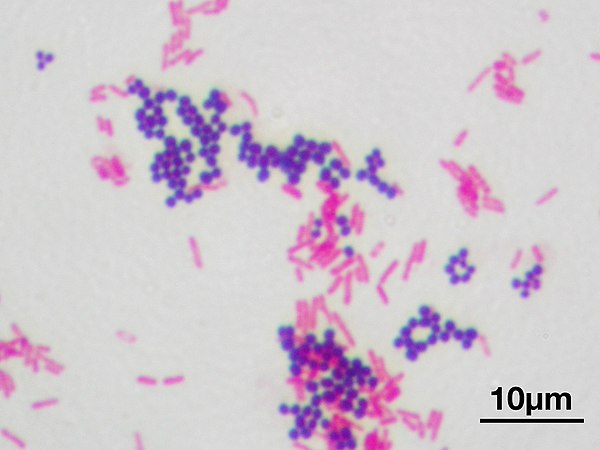
36
New cards
cocci
The purple bacteria are (shape)
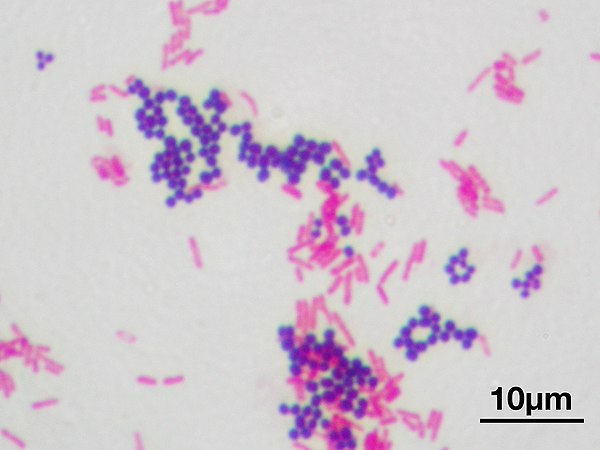
37
New cards
diplobacilli
A pair of rod shaped bacteria connected end-to-end
38
New cards
streptobacilli
A line of rod shaped bacteria connected end-to-end
39
New cards
diplococci
A pair of round bacteria
40
New cards
staphylococci
A cluster of round bacteria
41
New cards
coccobacillus
A bacteria whose shape is in between round and rod shaped.
42
New cards
colony
Growth of bacteria on a plate produces a bacterial __________ that is visible macroscopically.
43
New cards
False
(True/False): the same bacterial species will have the same morphology regardless of culture medium.
44
New cards
False
(True/False): Bacterial colonies may continue growing in size, but rarely look different due to longer incubation times.
45
New cards
photosynthesis
Bacteria can get metabolic energy based on fermentation, respiration, and/or
46
New cards
fermentation
Bacteria can get metabolic energy based on photosynthesis, respiration, and/or
47
New cards
respiration
Bacteria can get metabolic energy based on fermentation, photosynthesis, and/or
48
New cards
shape
Bacterial colonies can be classified by many factors including ___________ (circular, rhizoid, irregular, filamentous, spindle)
49
New cards
margin
Bacterial colonies can be classified by many factors including ___________ (entire, undulate, lobate, curled, rhizoid, filamentous)
50
New cards
elevation
Bacterial colonies can be classified by many factors including ___________ (flat, raised, convex, pulvinate, umbonate)
51
New cards
size
Bacterial colonies can be classified by many factors including ___________ (punctiform, small, moderate, large)
52
New cards
texture
Bacterial colonies can be classified by many factors including ___________ (smooth or rough)
53
New cards
appearance
Bacterial colonies can be classified by many factors including ___________ (glistening vs dull)
54
New cards
pigmentation
Bacterial colonies can be classified by many factors including ___________ (Nonpigmented, purple, red, yellow)
55
New cards
optical property
Bacterial colonies can be classified by many factors including _________ ________ (opaque, translucent, transparent)
56
New cards
neutral
Most pathogenic bacteria grow best at an (ACIDIC/NEUTRAL/ALKALINE) pH
57
New cards
mesophiles
Most pathogenic bacteria are (PSYCHOTROPHS/MESOPHILES/THERMOPHILES)
58
New cards
obligate aerobes
A.
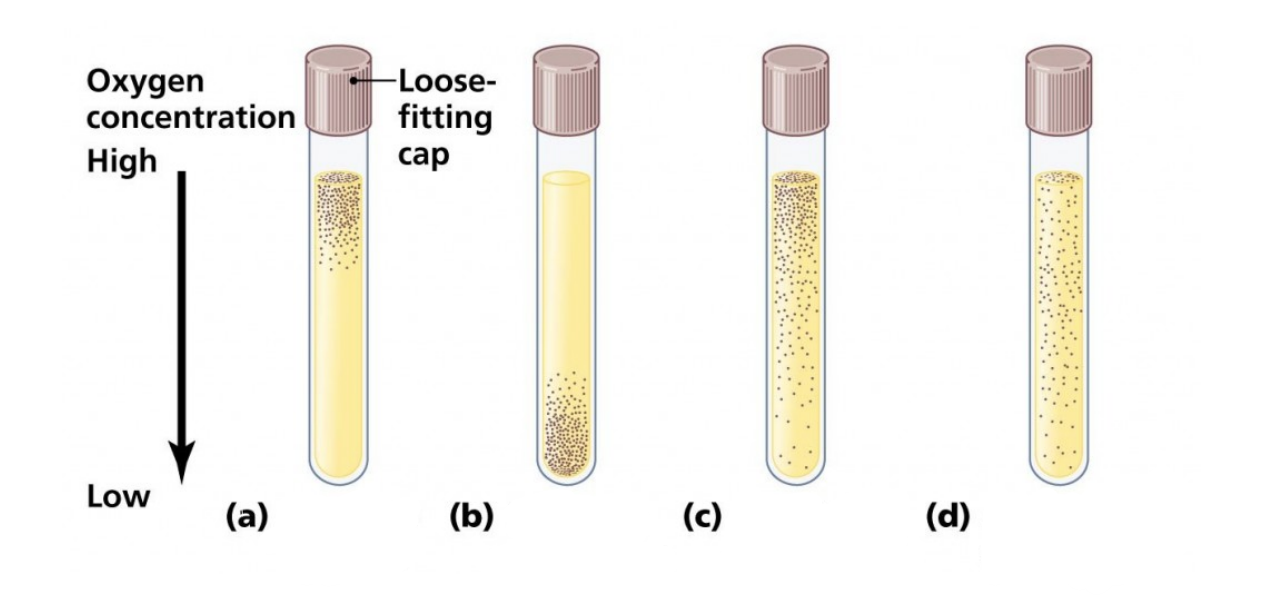
59
New cards
Obligate anaerobes
B.
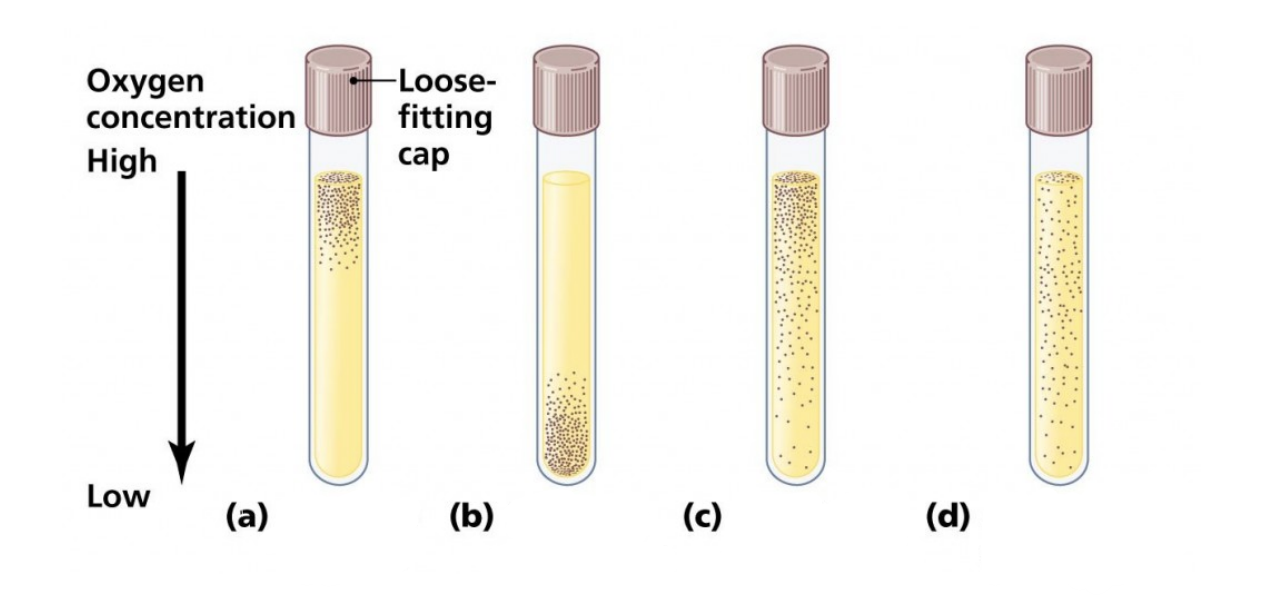
60
New cards
facultative anaerobes
C.
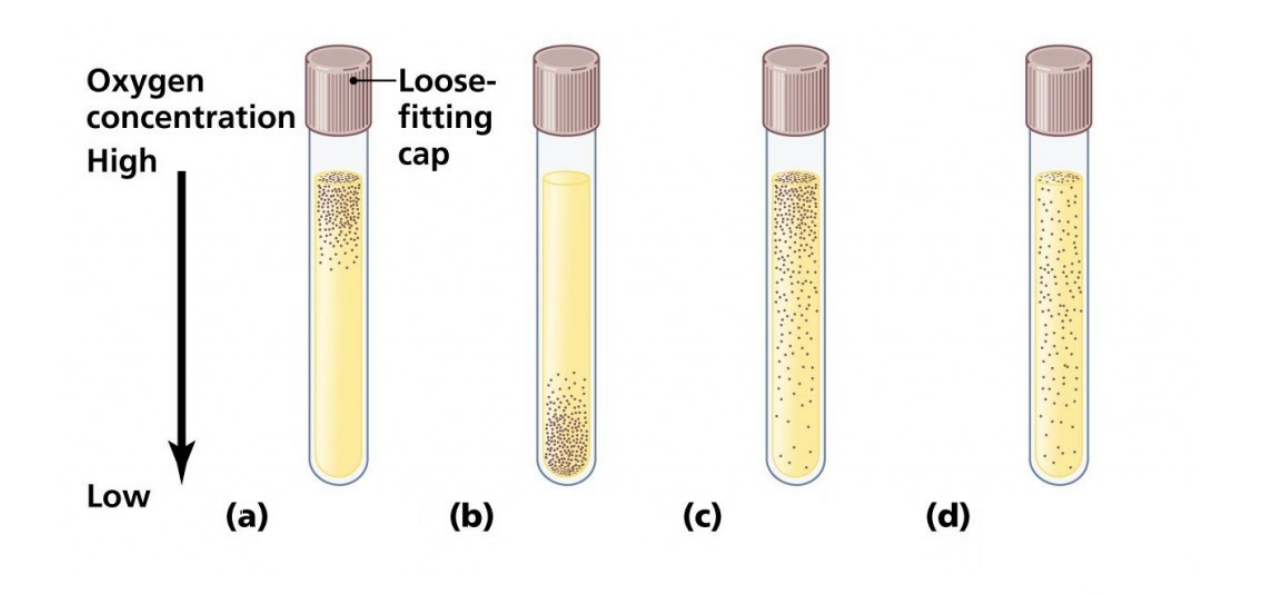
61
New cards
aerotolerant anaerobes
D.
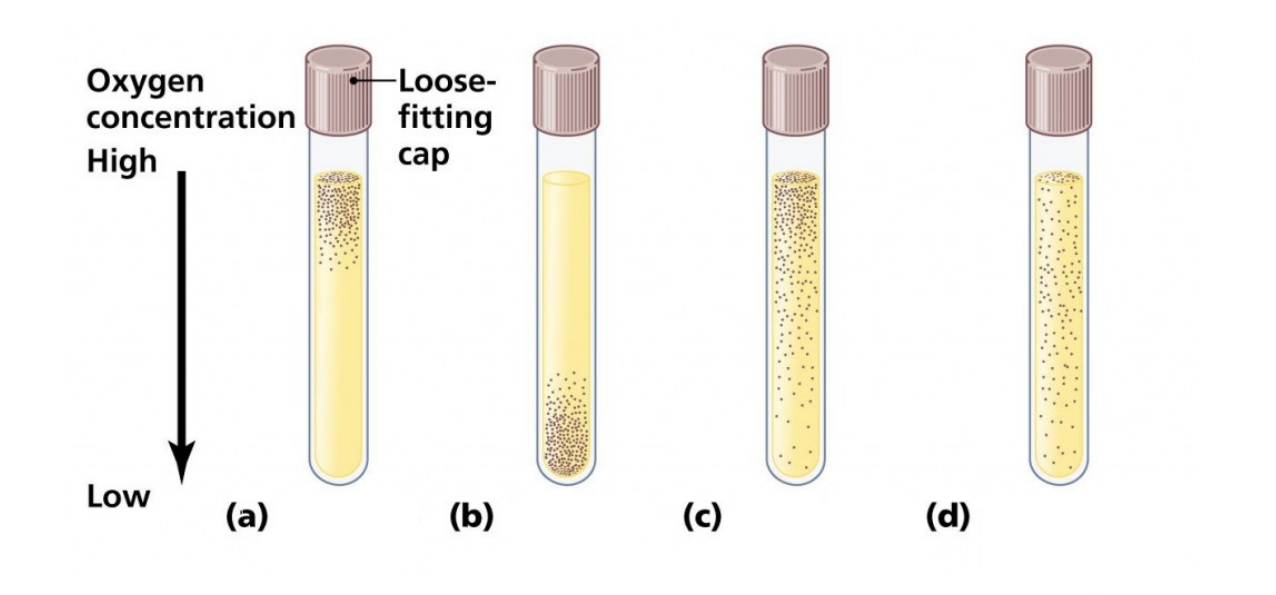
62
New cards
C
Most pathogenic bacteria are _. Facultative anaerobes.
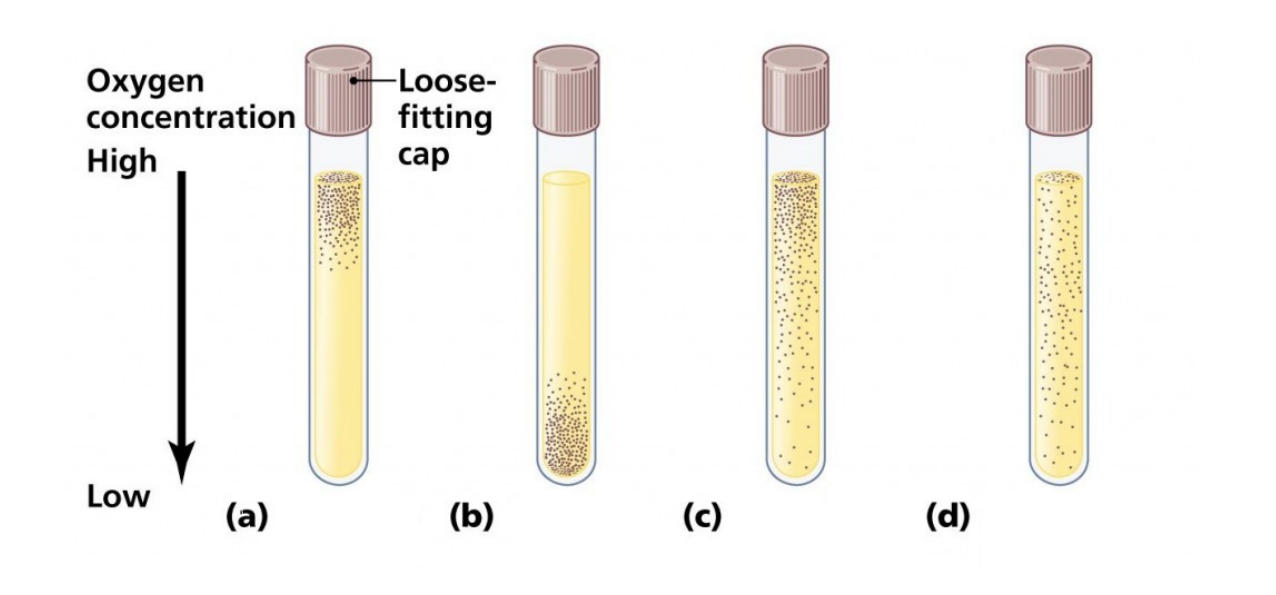
63
New cards
binary fission
Method of bacterial reproduction
64
New cards
generation time
The length of time required for a single bacterial cell to yield two daughter cells.
65
New cards
lag phase
1st phase
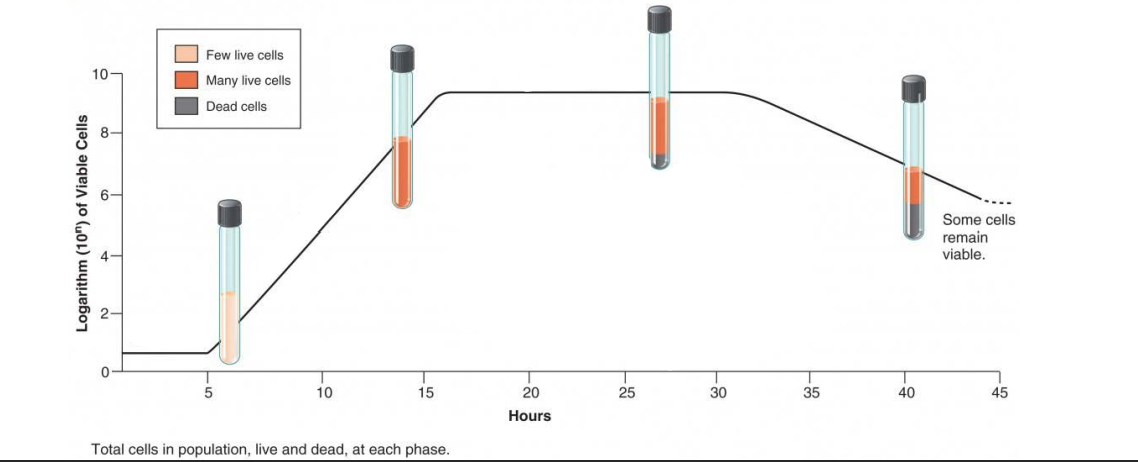
66
New cards
exponential phase
2nd phase
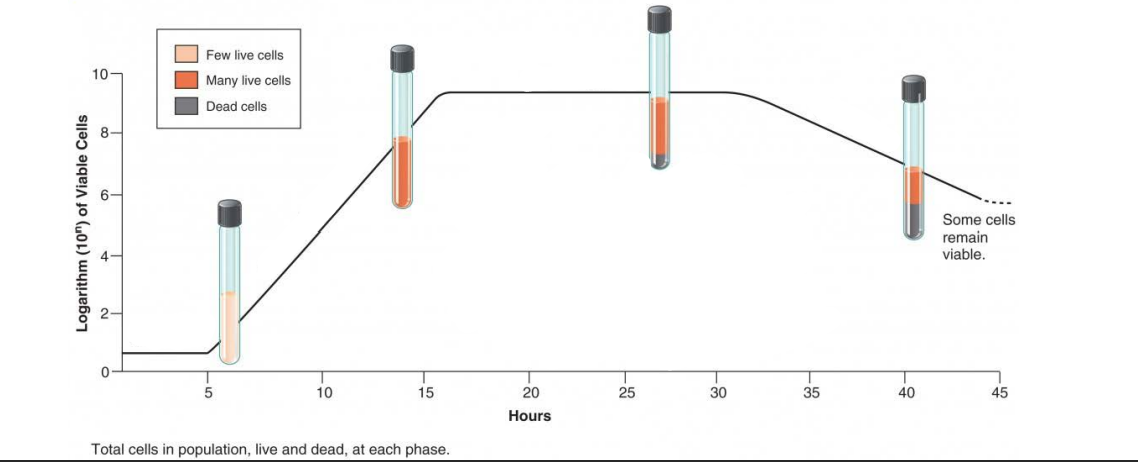
67
New cards
stationary phase
3rd phase
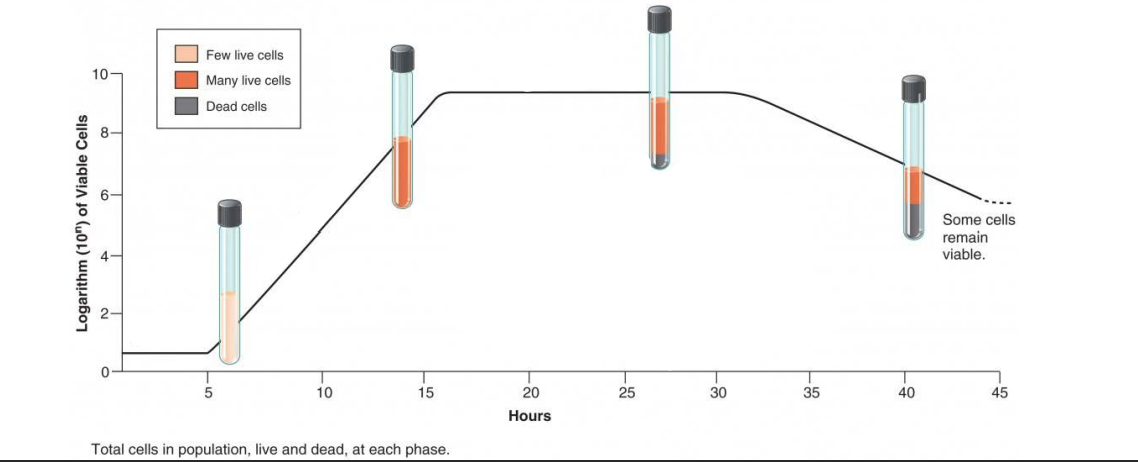
68
New cards
death phase
4th phase
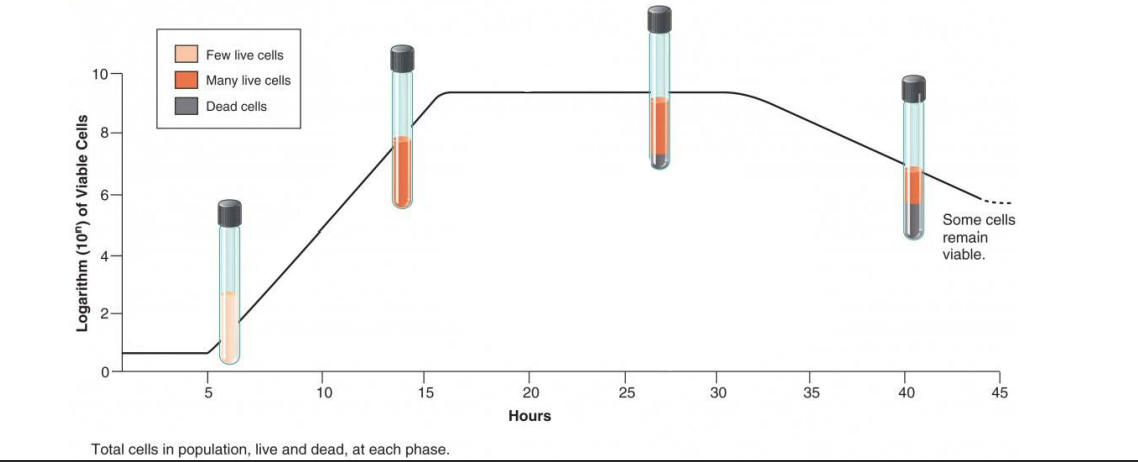
69
New cards
1
The phase (#) of bacterial growth where there is increase in cell size, active metabolism of cells, but no division.
70
New cards
2
The phase (#) of bacterial growth where cells multiply at a maximal rate.
71
New cards
3
The phase (#) of bacterial growth where growth is ceased due to exhaustion of nutrients or accumulation of toxic products.
72
New cards
4
The phase (#) of bacterial growth where there is progressive death of cells.